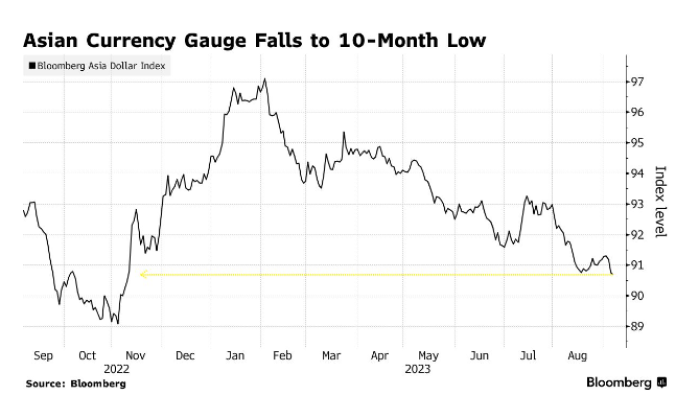
Shopping in the US is getting pricier, especially for Japanese and Chinese tourists. And it’s not inflation that’s the troublemaker this time around – it’s the strong US dollar. And the nuisance it’s creating extends well beyond those shopping tourists.
The greenback is at a 10-month high relative to a basket of big and small Asian currencies. It’s so high, in fact, that Japanese and Chinese central banks have come out with statements, warning that they’re ready to defend their currencies.
See, sharp declines in the Japanese yen (JPY) and Chinese yuan (CNY) are a problem for those countries’ economies. Since most commodities are priced in dollars, a stronger greenback makes imports more expensive, exacerbating inflation. And this US dollar strength is probably going to stick around for a while. That’s because higher interest rates in the US have been driving much of the strength of the dollar (because higher rates add to the allure of a currency among international savers and investors). Weaker growth, particularly in China, is likely to only add further fuel to that rally. What’s more, with the latest economic data showing that both the UK and eurozone economies are starting to slow, the central banks in those places are likely to come under increasing pressure to lower their interest rates. So the US dollar is likely to keep its interest rate advantage – and its relative strength – for the foreseeable future.
The dollar’s strength is great if you’re an American traveling abroad. But if you’re an investor, it’s a mixed bag. You could consider buying dollars, perhaps against the euro or the British pound, expecting it will continue to climb. Or you might also consider buying shares in companies that export into the US, while avoiding US companies that export internationally: their products will cost a lot more abroad, after all, and that could weaken their demand. US small and mid-cap companies tend to be bigger at home and benefit more from a stronger currency, compared to heftier US companies. Plus, there are other reasons why the little guys might shine. To take advantage of those attributes, you could consider the Schwab US Small-Cap ETF (ticker: SCHA; expense ratio: 0.04%) or the Vanguard S&P Small-Cap 600 ETF (VIOO; 0.1%).

